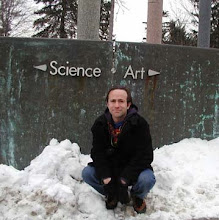Though actual research would make this a stronger essay, we can imagine translating Benjamin’s ideas about the work of art in the age of mechanical reproduction to the culinary arts. By Benjamin’s time some things have happened to change cooking: the means of production to produce food stuffs are in place and on the verge of the mechanical reproduction of the food itself – if it can still be called food, that is. Wonder bread is around the corner, and Twinkies not far down the road. Things accelerate from there and today prepackaged entire meals of any sort – reproductions of how “mom” used to make it can be popped in the microwave. To paraphrase Valery (217) there has indeed been an “amazing change in our very notion of cooking.” The aura (I’ll call it “signature” in another essay) is lost, the ritual of making food or as Benjamin puts it “its presence in time and space, its unique existence at the place where it happens to be” (220) is no more. When we can all eat exactly the same thing, we no longer eat anything that’s particularly special. We’re eating an image of food but nothing imbued with human care. If a painting invites us to contemplate (238) so too did a dinner cooked with authenticity. Dinner at McDonald’s? It’s a whir of the assembly line – bite, gulp, slurp, repeat – and move along.
However, in this age of mechanical reproduction we can eat any cuisine we wish from whichsoever corner of the world we all like available at the local bodega. In Benjamin’s words: “technical reproduction can put the copy of the original into situations which would be out of reach for the original itself.” (220) Also, flavors and combinations beyond “natural vision” (220) or natural tastes as it were, are now possible. This also means that things like corn syrup are possible as well.
Benjamin would claim a sense of “authenticity” is removed. I’d agree. Something is flattened in flavor. Everyone can eat Thai food but it perhaps ceases to offer that very identity that marked it as emanating from this unique culture, these particular people. As art is liberated by mechanical reproduction, so too is food. That is, because of reproduction, dining experiences become more than just eating well, they become works of art. The chef creates a masterpiece and we pay to be able to eat at the exhibition. In this way, culinary arts come more into being and thus seek to create something truly irreproducible. Food for “food’s sake,” so to speak. Food too was once magical (225) – those stone age art, rituals of hunt were about what nature provided – dinner. And now, we don’t know what our food comes from, what it used to look like. Like art, food loses its ritual value and has become political. And today, we’re beginning to think about slowing down, reconsidering where our food comes from. Mechanical reproduction in the culinary arts, may eventually spawn its antithesis – an awareness of what we eat in ways never possible before. – Nick
Subscribe to:
Post Comments (Atom)

No comments:
Post a Comment